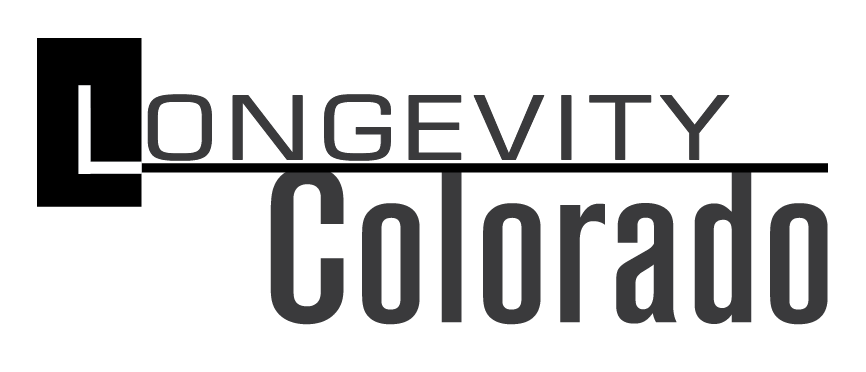Longevity Economy:
50+ Market is Growing Fast
It’s called the Longevity Economy, and it represents the sum of all economic activity driven by the needs of Americans aged 50 and older. According to AARP, this includes both the products and services they purchase directly and the further economic activity their spending generates. By 2032, this population group alone will generate more than half of the entire U.S. GDP.
This extended life span has created a new type of consumer profile for older adults, that includes their distinct consumption habits and expectations for products, technology, and services. In addition to the various categories of consumer goods already dominated by older adults such as healthcare, grocery, new cars, or luxury travel, this new generation is also interested in the latest transportation technology, entertainment, fashion, and all kinds of innovation. This contemporary breed of older adults does not just want to satisfy their needs but also to fulfill their passions and dreams - and to have fun!
Moreover, the 30 years added to human life span over the last century has led to a longer middle age resulting in an extended period of productivity and creativity for many. In fact, established business ownership activity levels are highest among those 55-64 in the U.S., with substantial activity continuing among those 65-74, according to a study by Babson College.
Subscribe to our free Newsletter
Stay up-to-date on the trends and innovation
happening in Colorado’s longevity market.
In the next decade, Colorado’s aging population is projected to grow at an unprecedented rate. This demographic shift is already reshaping Colorado, with its 65-and-over population growing 29% between 2010 and 2015 — the third-fastest rate in the nation – with the growth forecast to continue at a rapid pace until 2030.
Given the strong presence of older adults in the state, the longevity market represents a big opportunity with transformative potential for the state's economy alone. It also pushes us to rethink aging and recalibrate our expectations for this consumer group.
The global population age 60-and-over will encompass more than one in five human beings by mid-century, rising from 900 million in 2015 to 2.1 billion in 2050, according to the World Health Organization.
Colorado VCs, private equity, and angel investors are also starting to follow the lead of some of the largest consumer brands that are looking to capture the 50+ market share. This makes Colorado’s Longevity Economy Landscape fertile grounds for innovation and investment.
However, to become the place of choice for these investments and truly turn the longevity of its population into an asset, Colorado needs to further leverage its favorable position, and do so quickly. With continued focus, innovation, and capital, the state can take advantage of the timing, gain category expertise, and successfully position itself as the longevity economy leader.

With a wealth of established organizations in the field of aging to draw on for knowledge and support, plus a host of more recent arrivals like Aging2.0’s Denver Chapter and Catalyst HTI, Denver has the potential to become the Age-Tech Hub of the U.S. More broadly, Coloradans clearly have a state that supports entrepreneurs, which is one of their greatest advantages, particularly for age-tech startups.
Already there are many in the startup space that are not only setting the trends in the Longevity Economy; they are also sharing their experience, tips, and advice on how to break into the Longevity Market. This is an amazing opportunity for entrepreneurs, startups, and others looking to tap into the know-how that already exists and will ideally allow them to join in Colorado’s next silver rush.
A great example of a startup helping others is Nymbl Science. The digital evidence-based health solution company in Colorado’s tech community shared its experience and advice on creating a successful Public Private Partnership with DRCOG, the agency responsible for oversight of the Area Agency on Aging (AAA) for five counties in the Denver area in a case study called, Public Private Partnerships in the Aging Sector. The study includes proposed solutions to overcoming existing barriers for private sector players and seven tips on how to succeed in the state’s longevity market.
Interestingly, many homegrown startups are led by entrepreneurs who have experienced first-hand the lack of resources available to older adults, their loved ones, and caregivers. This is the case with Silvernest, an online roommate matching service for older adults, which has not only been thriving in Colorado’s Age-Tech space but on the national front as well.

Overall, opportunities in the Longevity Market remain exponential; as increasing life expectancy creates seismic demographic shifts in all parts of the world. The 50+ space will affect organizations from all sectors in order to support the needs of this new aging population.
The common denominator for all products and services from this market is that they must be designed to provide solutions for older adults. It also means creating new marketing strategies such as Ageless, Life-Stage, and Generational Marketing - three marketing approaches that are tailored to the 50+ consumer.
Fast developments in other countries are also having implications on the U.S. Longevity Market. Recent innovations from Holland are a great example of that, with Dutch companies’ products now entering the U.S. aging market. With their cutting-edge treatments for aging illnesses including supplements for osteoarthritis, these companies could capture a good portion of the $128 billion a year spent on joint comfort products alone.
More than ever, those interested in the longevity market and wanting to capitalize on it need to stay on top of news and trends in this fast-moving emerging market. These recommended newsletters and podcasts from across Colorado and the nation provide a great starting point.
The proportion of people in the working-age population worldwide who are 50 or older will grow from 20 percent in 2010 to 30 percent by 2050.
Over the past 40 years, we have gained about 20 extra years of life that has already started bringing about changes in the workforce across the globe.
Not surprisingly older people are working longer today. In fact, the 65+ population has become the fastest growing segment of workers - with the 65-74 age group growth rate at 55% and the 75+ growth rate at 86%, according to the Bureau of Labor Statistics.
Colorado is no exception to this growing trend. In its recent Talent Pipeline Report, the Colorado Workforce Development Council reported that the “Colorado’s labor force participation of those 55+ was 45.9%, 5.9% higher than the national average.” In 2018, approximately one in four of the 65+ continued to contribute to the state workforce.
Catering for this new workforce could bring some significant benefits to the economy. Studies suggest that having older adult workers could represent a competitive advantage for companies who will be able to retain expertise and institutional knowledge and create a “valuable resource for training and mentoring,” in addition to direct productivity results. Envisioning what this new norm could look like will entail state and local governments collaborating with employers to create a new model of work that has adapted to our longer life spans.

Employment policies and practices will need to be adapted to hire and retain older workers, including initiatives such as retraining programs, age-friendly workplaces and benefits, flexible retirement or phased retirement plans among other options.
Beyond these changes, communities, policymakers and other stakeholders will have to work together to tackle another critical issue: ageism. Ageism can be defined as the culmination of many long-held misconceptions and negative stereotypes about older workers. The World Economic Forum reported, “ageism is the primary barrier faced by older people to remain in or re-enter the workforce.”
In Colorado, some local initiatives are starting to change the narrative about older workers through advocacy and outreach to increase public understanding around this issue especially when it comes to ageism. It also seeks to demonstrate the benefits of having an intergenerational workforce and encourage companies to better leverage this valuable resource. However, more holistic changes are needed across sectors including transportation, housing, health, and wellbeing on issues affecting older adults in order to facilitate their participation in the workforce and fully yield the benefits of this new labor group.
- Colorado can Meet Growing Workforce Demands by Keeping Older Adults in the Job Market
- Why Ageism Persists and What’s Being Done About It
- Colorado’s 50+ Market Is Growing Fast and It’s Ripe for Disruption
- New Case Study Proves PPPs in the Aging Sector Work!
- How one Strategic Alliance is Advancing Age-Tech Innovation in the Longevity Market
- Colorado’s Next Silver Rush: The Longevity Economy
- How One Local Startup Is Thriving in Colorado
- Colorado Start-up Shares 10 Tips for Breaking into the Longevity Market
- 4 Tech Trends in the Longevity Economy
- Colorado Academics Collaborate To Meet Challenges in Aging
- Preparing Coloradoans for the 100-year life blog
- 3 Ways to Market to Baby Boomers: Ageless, Life-stage, and Generational Marketing
- Best Newsletters & Podcasts to Keep Up with the Longevity Market
- Dutch Ingenuity and Entrepreneurship Expands to U.S. Wellness and Aging Markets
- New Case Study Proves Public Private Partnerships in the Aging Sector Work!
- Med Tech Offers a Glimpse Into the Future of Aging in Place
- Medical Record Keeping App Game Changer: Older Adults & Caregivers
